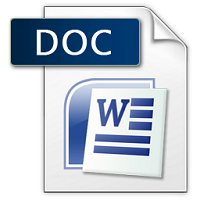Original price was: ₹500.00.₹299.00Current price is: ₹299.00.
Note – Scroll down and match your questions
Note- Unique Ready to Upload
700 per assignment
Unique order via whatsapp only
Whatsapp +91 8791490301
Description
Operations and Supply Chain Strategies
Jun 2025 Examination
Q1. How have manufacturing and supply chain strategies evolved over time, and what adaptations have they made to address modern challenges? (10 Marks)
Ans 1.
Introduction
Manufacturing and supply chain strategies have undergone significant transformation over the past several decades, shaped by globalization, technological advancements, and shifting market demands. Initially focused on mass production and cost minimization, these strategies have evolved to emphasize agility, sustainability, and customer-centricity. Modern supply chains are expected to be fast, resilient, and digitally enabled to respond to disruptions, customization needs, and global competition. The rise of e-commerce, pandemics like COVID-19, and geopolitical tensions have further tested traditional models, pushing companies to rethink
Fully solved you can download
ASSIGNMENTS JUNE 2025
- Fully Solved, High Quality
- Lowest Price Guarantee: Just ₹299 per Assignment!
- 100% Original & Manually Solved (No AI/ChatGPT!)
Hurry! Last Date: 29 May 2025
- Order Now: com/online-buy-2/
Quick Response Guaranteed!
For Unique Assignment please contact on
- WhatsApp: 8791490301
- aapkieducation@gmail.com
- aapkieducation.com
Q2. A company expanding its operations globally faces delays in shipping, rising transportation costs, and regulatory compliance issues. How should the company address these operational and strategic challenges to ensure a smooth and efficient supply chain? (10 Marks)
Ans 2.
Introduction
As companies expand their operations globally, managing a seamless supply chain becomes significantly more complex. Common challenges such as shipping delays, rising transportation costs, and intricate international regulations can disrupt operations, impact customer satisfaction, and increase costs. These hurdles can arise due to geopolitical tensions, trade restrictions, port congestion, fluctuating fuel prices, and diverse compliance laws across borders. To maintain competitiveness and ensure a responsive global supply chain, companies must adopt integrated
Q3 (A) A fast-growing e-commerce company struggles with inventory management, order fulfillment, and last-mile delivery. How can adopting a logistics outsourcing strategy help the company improve efficiency and scalability? (5 Marks)
Ans 3a.
Introduction
As a fast-growing e-commerce company expands, it often faces operational bottlenecks such as poor inventory control, delayed order fulfillment, and inefficient last-mile delivery. These issues can damage customer satisfaction and restrict scalability. Logistics outsourcing offers a strategic solution by allowing the company to partner with specialized third-party logistics providers (3PLs) who possess the expertise,
Q3(B) Companies operate in dynamic markets with varying demands, competition, and disruptions. How can businesses choose the most suitable supply chain strategy—such as lean, agile, or hybrid—based on their industry, market conditions, and customer expectations? Provide examples to support your answer. (5 Marks)
Ans 3b.
Introduction
In today’s volatile and competitive markets, businesses must align their supply chain strategies with the unique needs of their industry, customer expectations, and market dynamics. A one-size-fits-all approach no longer works; instead, companies must evaluate whether a lean, agile, or hybrid strategy best suits their operating environment. Each model offers distinct advantages: lean focuses on efficiency, agile prioritizes flexibility, and hybrid balances both. Selecting the right strategy ensures cost-effectiveness, responsiveness, and customer satisfaction across diverse





